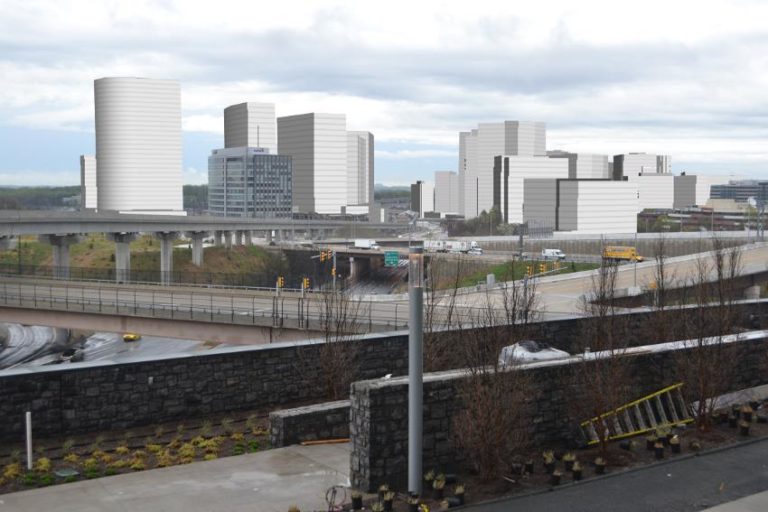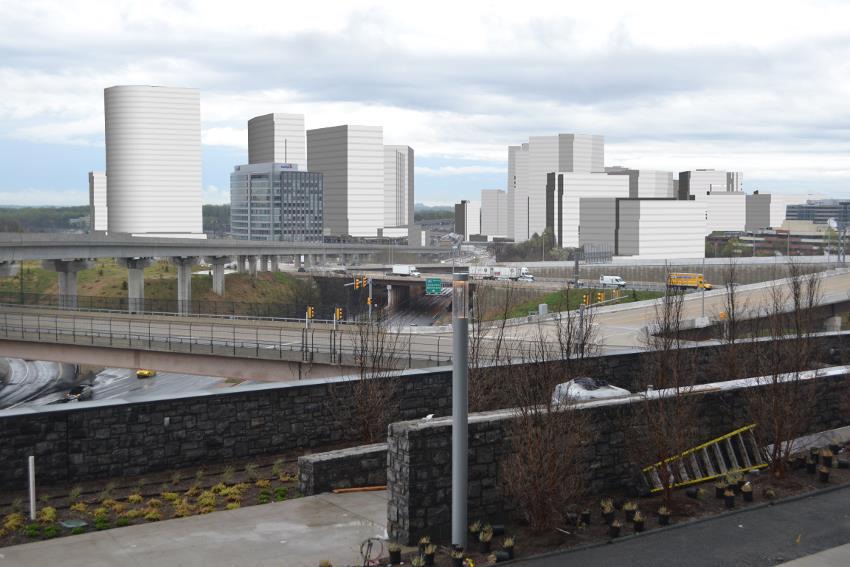Washington Business Journal reported this week that yet another development project, the first building of LCOR’s Commons of McLean is set for groundbreaking. The building would join four other mid and high rise towers currently under construction, including two at the Cityline Garfield parcel, MITRE Building 4, and Capital One headquarters.
To date the growth around McLean station, the closest metro stop to Tysons East, has largely been balanced between commercial and residential land uses. With the initiation of the Commons of McLean the dynamic will begin shifting towards residential much more quickly, as all buildings within the overall rezoning are residential use.
[baslider name=”TysonsEastSkyline”]
The skyline hasn’t changed much yet, most of the construction remains below the tree line, but that will change rapidly heading into summer when many of the projects will start popping up above the height of the surrounding developments. The following rendering shows how much will change based on the currently approved pipeline of projects, including over 20 new buildings.
One thing is obvious from the rendering, between the new developments happening at Tysons Corner station, and those within Tysons East, there is a massive gap created by the interchange of the Beltway, Hot Lanes, and Route 123. The land gap between the two areas, at the interchange alone, is over 65 acres in size, large enough to fit all of Reston Town Center.
 Getting from one side of the interchange to the other, even if it were possible (which it isn’t), would be a 1/2 mile walk through barren pavement and speeding traffic. These obstacles remain the greatest barriers for Tysons in the goal of becoming a singular area. It is doubtful there will ever be an impetus to remove these obstacles, so the best one can hope for would be mitigation. That means for atleast the next 50 years residents of Tysons should get used to these VDOT dead zones, they aren’t going anywhere.
Getting from one side of the interchange to the other, even if it were possible (which it isn’t), would be a 1/2 mile walk through barren pavement and speeding traffic. These obstacles remain the greatest barriers for Tysons in the goal of becoming a singular area. It is doubtful there will ever be an impetus to remove these obstacles, so the best one can hope for would be mitigation. That means for atleast the next 50 years residents of Tysons should get used to these VDOT dead zones, they aren’t going anywhere.
Even with the massive gaps that will remain for the foreseeable future, Tysons can be a success as shown in the rendering. The land area beyond the 495 gap in the rendering accounts for nearly 350 acres which given the right guidance and trajectory can become a vibrant downtown.


